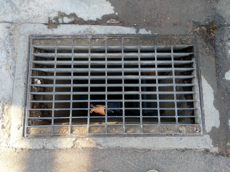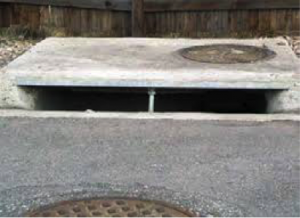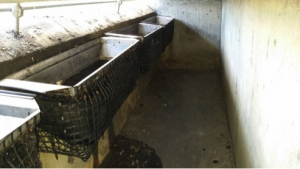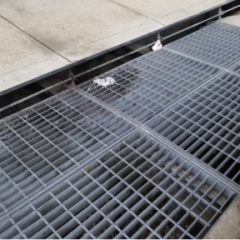FAQ's
If you are reading this article you most likely have been “highly” advised to install a catch basin filter and had no idea what or where to get one of these “Fossil Filters”. Hopefully this readers digest synopsis will help you garner some quick knowledge about “Fossil Filters” or correctly termed “Catch Basin Filter”.
The term “fossil filter” was coined about 20 years ago by the founders of Kristar Enterprises and has become generic term for a type of filter which adsorbs hydrocarbons found in runoff water. The term was derived from a term used in the gas & oil business – fossil fuels that were made of dead micro-animals and plants thousands of years ago; now hydrocarbons are better known as “oil”.
The so called “Fossil Filter” is an inaccurate and archaic term for a “catch basin” filtration or “storm drain” filtration system designed to keep drains clear and free of debris and provide some type of water cleansing activity. The fossil filter is really only one component of a water filtration system.
The advent of a storm drain catch basin was spawned by the desire to stop water pollution and protect our environment. This effort is managed and governed by the federal EPA; State and City governments and agencies. The federal agencies have provided direction to the states for execution and the cities are responsible for compliance. The cost of compliance is expensive but necessary for the long term since water appears to be a limited resource. The focus and effort for water clean-up is just becoming more acceptable and enforceable. City and county enforcement is varied due to resources and tax dollars. Those communities with beach front property tend to be the most vigilant. Most new construction and redevelopment require “Catch Basin” water filtration installation to clear permitting. It must be noted this article does not address the water quality standards and best management practices (BMP’s) or EPA requirements. We’ll reserve this for another article. Catch Basin Filtration Systems are a static water filtration system using eco-friendly filtering materials to remove oil, hydrocarbons and toxins from the water. It is installed in any size or shape, under the grate openings of new or existing drainage.
Basic Catch Basin Filtration Systems have three basic components:
1) Debris Catch
2) Optional sediment catch or filter (We think sediment is a good thing – it is nature’s way of cleaning)
3) Hydrocarbon filter
4) Filter frame or insert made of stainless steel mandated by the EPA.
There are generally 3-types of storm drain inlets or catch basin configurations:
1) Catch Basins are the most common typical storm drain with iron grate over outlet at the bottom or side leading to street sewer/process plant or ocean/watershed. This is a box like structure cement formed or prefabed.
2) Curb Inlet mounted storm drain inlet at the curb level leading to an underground vault street sewer leading to a plant or ocean/watershed.
3) Trench Drain – normally 5” wide x 6” deep trench designed to capture and move water from the trough to a lower outlet; it usually crosses the mouth of a driveway noticeable by a narrow grate system over the top. It is required to have a tubular 3” sock filter of oil adsorbing media.
As storm water enters the drain inlet, the water passes through a replaceable filter material that captures petroleum-based hydrocarbons & toxins. Filters should not inhibit water flow during high volume flows when drain capacity is critical. Catch Basin Filter inserts seemingly is the most efficient way to meet water quality standards quickly. The so called Fossil Filter will need to be replaced every so often to ensure the water filtration process is working correctly depending on the quantity/type of water runoff. Drains must be clear and working before installation. Most cities and counties in are requiring catch basins a.k.a. fossil filter installations into storm drains to catch harmful solid waste, oil, toxins, metals and hydrocarbons while protecting the environment

The standard catch basin is designed to drain water usually to a sewer outlet or out to a
waterway such as a stream, river or ocean.
The filtration components for a catch basin are the frame, filters and sediment pad or
sediment bag. Catch Basins need regular inspection and cleaning to remove solid
waste.
All cities and counties in California require some type of catch basin filtration systems starting at the source. The number one unseen pollutant are hydrocarbons better known as oil from cars, trucks, roadways and parking lots.Next would be hidden particulate from heavy metals like steel, iron, zinc, copper and many more. Last, the most detrimental environmental hazard are pollutants such as salt or NACL and pesticides and waste chemicals from manufacturing and processing.In short; polluting the environment in any way is illegal and punishable by fines.The more common sizes of catch basins are 12”x12” – 18”x18” -24”x24”- 36”x36”

Curb inlets are generally designed to capture and direct rainwater collected from the street grades. These types of storm drains collect water and are moved directly to underground sewer systems which generally lead to city processing plants or ecological waterways such as rivers and streams or bio-swales.

Curb inlet filtration systems characterized by having debris baskets mounted on the inside of the curb inlet. Curb inlet baskets need constant inspection and maintenance.

A very common type of curb inlet drain is designed for heavy water flows better know as a “Dual”. This is a combination of a catch basin and a curb inlet. It will have a frame configured to filter water and collect debris.